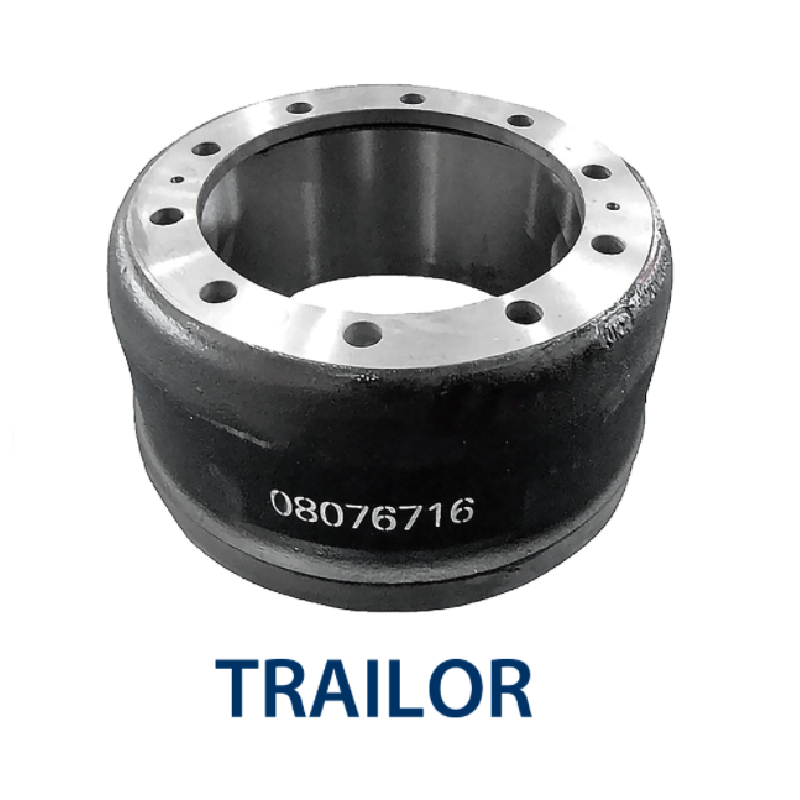dec . 27, 2024 04:37 Back to list
How to measure the thickness of brake drum safely and accurately
How to Check Brake Drum Thickness A Comprehensive Guide
Brake drums are a critical component of a vehicle’s braking system, particularly in those equipped with drum brakes. Over time, brake drums can wear down due to friction heat and regular use, which may compromise their effectiveness and safety. Hence, it’s essential for vehicle owners and mechanics alike to periodically check the thickness of brake drums to ensure they remain within manufacturer specifications. In this article, we will explore the steps to effectively check brake drum thickness.
Understanding Brake Drum Thickness
Typically, brake drums come with a specified minimum thickness set by the manufacturer, which is the threshold below which the drums should not be used. When the thickness diminishes due to wear, the drums can experience overheating, reduce braking efficiency, and lead to brake failure. Therefore, regular checks are crucial for maintaining optimal brake performance.
Tools Needed
Before beginning the inspection, ensure you have the following tools
1. Caliper or Micrometer These precision tools will be necessary for measuring the thickness of the drum. 2. Brake Cleaning Solution This will be used to clean the drum surface before measurement. 3. Safety Equipment Gloves and safety glasses to protect yourself while working.
Step-by-Step Guide to Checking Brake Drum Thickness
1. Secure the Vehicle Before you start working on your vehicle, ensure it is parked on a flat, stable surface. Engage the parking brake and consider using wheel chocks for added safety.
how to check brake drum thickness

2. Remove the Wheel Use a lug wrench to loosen and remove the wheel that covers the brake drum. This may require lifting the vehicle with a jack and securing it with jack stands. Always adhere to safety precautions when working under a vehicle.
3. Inspect the Brake Drum Before measuring the thickness, examine the drum for visible signs of wear, such as cracks, grooves, or discoloration. Cleaning the drum surface with a brake cleaning solution ensures that dirt or debris does not affect your measurements.
4. Measure the Thickness Using your caliper or micrometer, measure the thickness of the brake drum at multiple points around its circumference. This is important because wear can occur unevenly. Record your readings carefully.
5. Compare with Specifications After obtaining the measurements, compare them with the minimum thickness specifications provided by the vehicle manufacturer. These specifications can usually be found in the service manual or online.
6. Decide on Reconditioning or Replacement If the thickness is still above the minimum specifications, the brake drum may be reconditioned through resurfacing. However, if the measurements are below the limit, it’s time to replace the brake drum entirely. Always replace drums in pairs for optimal performance and even wear.
7. Reinstall the Wheel After testing or replacing the brake drum, make sure to reinstall the wheel securely. Lower the vehicle and tighten the lug nuts to the manufacturer's torque specifications.
8. Test Drive Finally, perform a test drive at low speeds to ensure that the brakes operate smoothly. Listen for any unusual noises, and check for proper braking response.
Conclusion
Regularly checking the thickness of your brake drums is an essential part of vehicle maintenance that should not be overlooked. By following these steps, vehicle owners can ensure their braking system remains effective, enhancing both safety and performance on the road. If you’re uncertain about your measurements or the overall condition of your brakes, it’s always prudent to consult a professional mechanic. Regular brake inspections not only prolong the lifespan of your brake components but also ensure your safety and the safety of others on the road.
-
Iveco Brake Drum | Premium OE Quality for Daily & Eurocargo
NewsAug.22,2025
-
Your Brake Drum Man: Quality & Performance Parts
NewsAug.21,2025
-
Explore Japan: Ultimate Travel Guide & Authentic Experiences
NewsAug.19,2025
-
Your Brake Drum Man: Premium & Reliable Brake Drums for Sale
NewsAug.18,2025
-
ROR Web Development: Build Fast, Scalable, Secure Apps
NewsAug.17,2025
-
Scania Brake Drums: OEM Quality for Optimal Safety & Durability
NewsAug.16,2025
